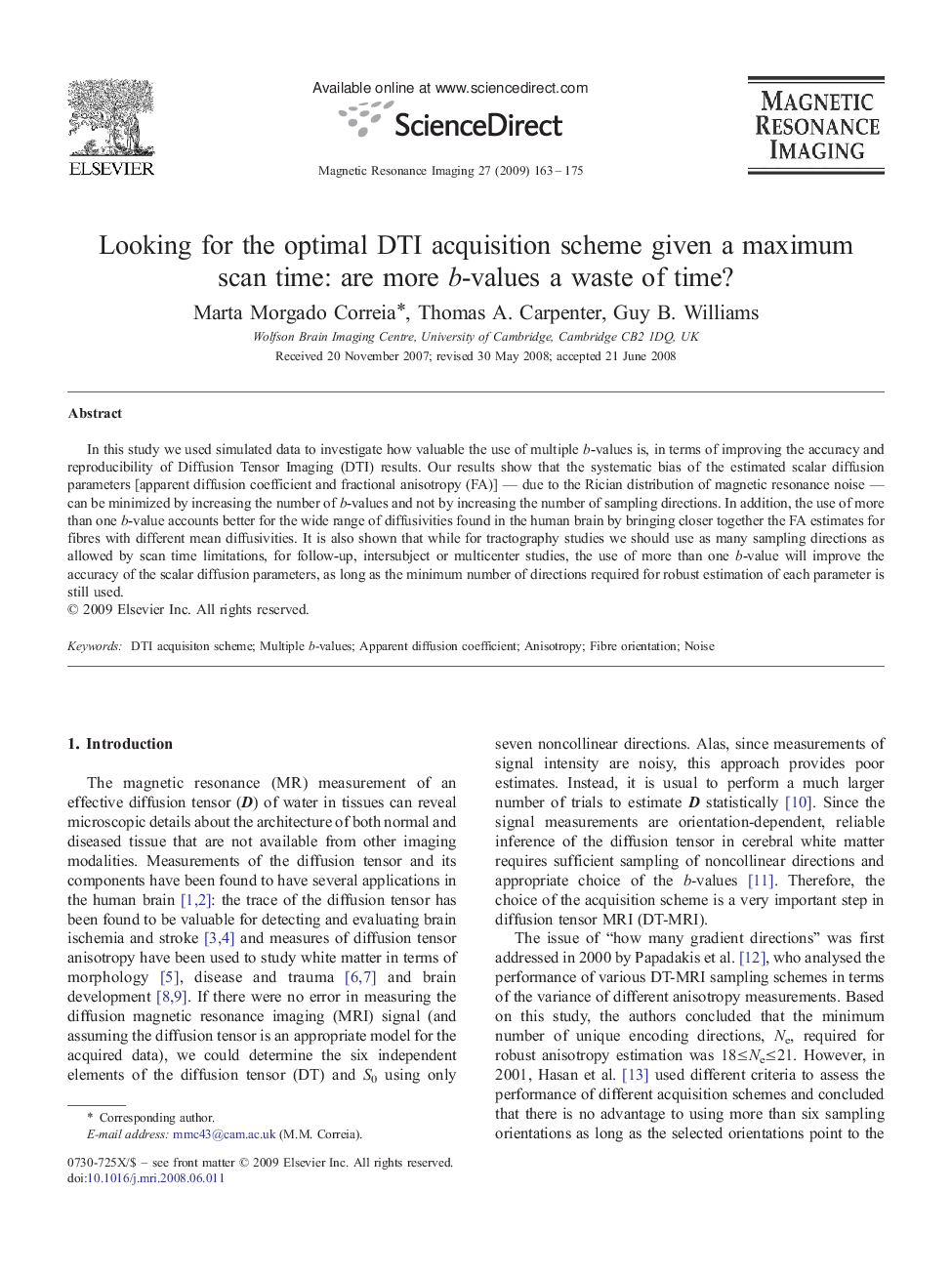| Article ID | Journal | Published Year | Pages | File Type |
|---|---|---|---|---|
| 1807314 | Magnetic Resonance Imaging | 2009 | 13 Pages |
In this study we used simulated data to investigate how valuable the use of multiple b-values is, in terms of improving the accuracy and reproducibility of Diffusion Tensor Imaging (DTI) results. Our results show that the systematic bias of the estimated scalar diffusion parameters [apparent diffusion coefficient and fractional anisotropy (FA)] — due to the Rician distribution of magnetic resonance noise — can be minimized by increasing the number of b-values and not by increasing the number of sampling directions. In addition, the use of more than one b-value accounts better for the wide range of diffusivities found in the human brain by bringing closer together the FA estimates for fibres with different mean diffusivities. It is also shown that while for tractography studies we should use as many sampling directions as allowed by scan time limitations, for follow-up, intersubject or multicenter studies, the use of more than one b-value will improve the accuracy of the scalar diffusion parameters, as long as the minimum number of directions required for robust estimation of each parameter is still used.
